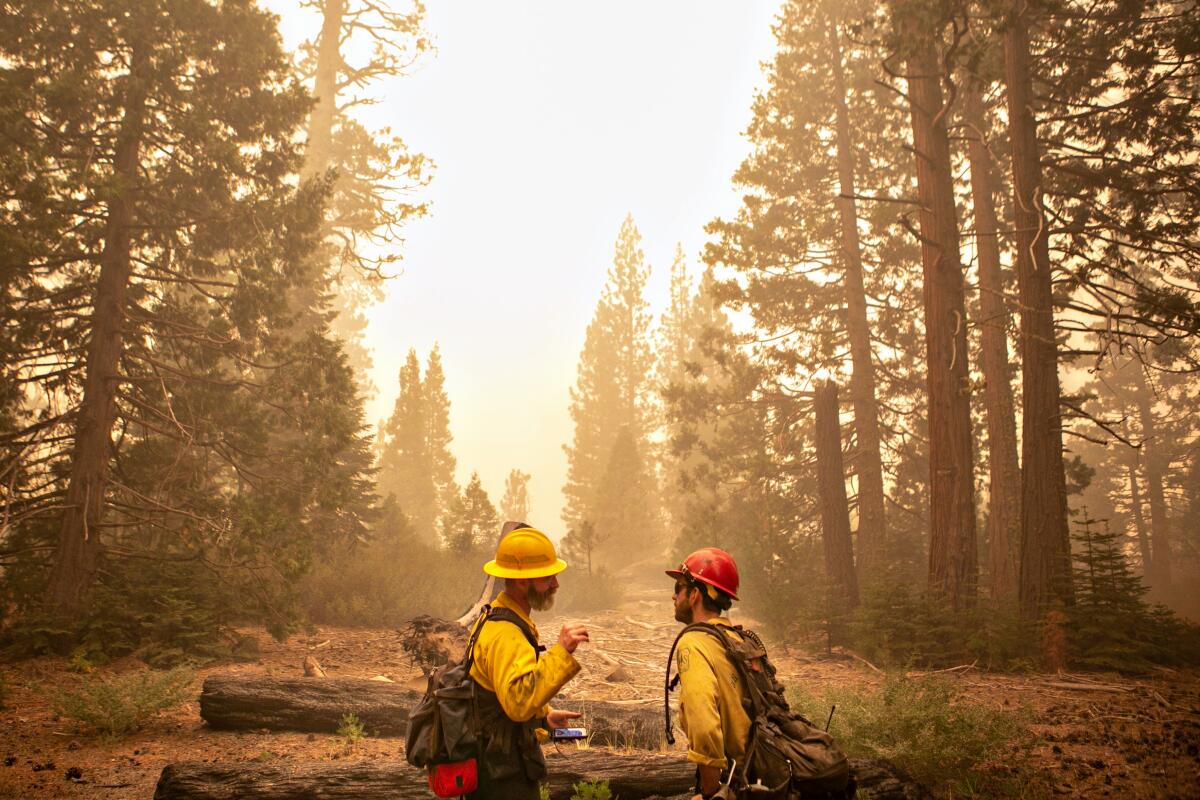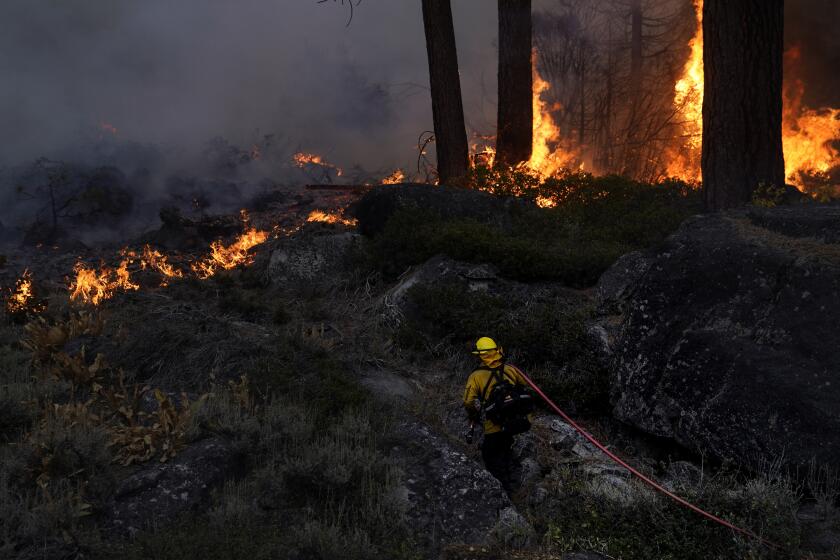Federal response to wildfires must change, Forest Service chief says

WASHINGTON — The U.S. Forest Service needs to hire more firefighters and reconfigure how it mitigates the risk of wildfires that are growing more intense, the head of the agency told lawmakers Wednesday.
This year “has been devastating in not only the size and frequency of large wildfires but also in terms of sustained activity,” U.S. Forest Service Chief Randy Moore testified at a hearing before the House Subcommittee on Conservation and Forestry.
Moore blamed the severity of recent fire seasons on extreme drought, a warming climate and a century of “overly aggressive suppression policies” that have made forests ripe for more destructive fires.
About 46,000 fires have burned nearly 6 million acres across the West this year, destroying 4,500 structures and killing four federal firefighters, Moore said.
About 27,000 firefighters have been deployed by the federal government to fight wildfires this year, but they are still stretched thin. The problem reached a critical point over the summer with a burst of early wildfires in the West amid extreme staffing shortages. A combination of low pay, competition from state and local fire departments, and exhaustion from longer and more destructive fire seasons has left federal agencies scrambling to fill positions.
“We have seen highly trained personnel leave the Forest Service; we have experienced some inability to recruit new employees; and we are in a constant mode of training new employees,” Moore said in prepared testimony.
“Our forests are really in a state of crisis. What we’re seeing now should be a call to action.”
The Biden administration this year boosted the minimum wage for federal firefighters from $13 to $15 per hour, enabling the federal government to attract firefighters in states such as California and Washington, where pay was higher.
“Federal wages for firefighters have not kept pace with wages offered by state, local and private entities in some areas of the United States,” Moore said in written testimony. “Firefighters must be fairly paid for the grueling work they are willing to take on.”
Moore told The Times last week that “we’ll never be able to hire enough firefighters to fight our way out of what’s going on on the landscape. We’re seeing conditions out there that I have not seen in my 40-plus years of working for this agency.”
Last year, California recorded its largest fire season ever. The severe effects these fires have on communities are partly due to the approach American officials have historically taken to eliminating fires.
Before Europeans colonized North America, many Western forests benefited from frequent, low-intensity fires caused by lightning and Indigenous peoples’ burning practices, experts say. After colonization, U.S. officials instead aggressively suppressed fires, upending that beneficial cycle and helping to create an imbalance that makes wildfires more dangerous and more intense.
The Forest Service chief told lawmakers that his agency would instead focus on mitigating the effects of wildfires by more aggressively treating forests before fires begin. Such treatments include thinning underbrush and debris and clearing dead branches and trees to reduce potential fuel for blazes. Moore testified that such treatments near Lake Tahoe helped stop the spread of the Caldor fire last month, saving homes and lives.
Moore said that about 66 million acres need to be treated but that it could be nearly as effective to focus on 20 million critical acres over the next decade.
“We must actively treat forests,” he said. “That’s what it takes to turn this system around.”
Rep. Jim Costa (D-Fresno) said at the hearing that West Coast forests are “in a crisis mode” and that there is no longer a fire season but a fire year. The federal government needs to devote more money to the Forest Service to help it shift away from fire suppression to prescribed treatments, he said.
“If we continue in this way,” Costa warned, “I don’t think we are ever going to deal with the crisis or provide the forests with the proper management they deserve.”
More to Read
Get the L.A. Times Politics newsletter
Deeply reported insights into legislation, politics and policy from Sacramento, Washington and beyond. In your inbox three times per week.
You may occasionally receive promotional content from the Los Angeles Times.












